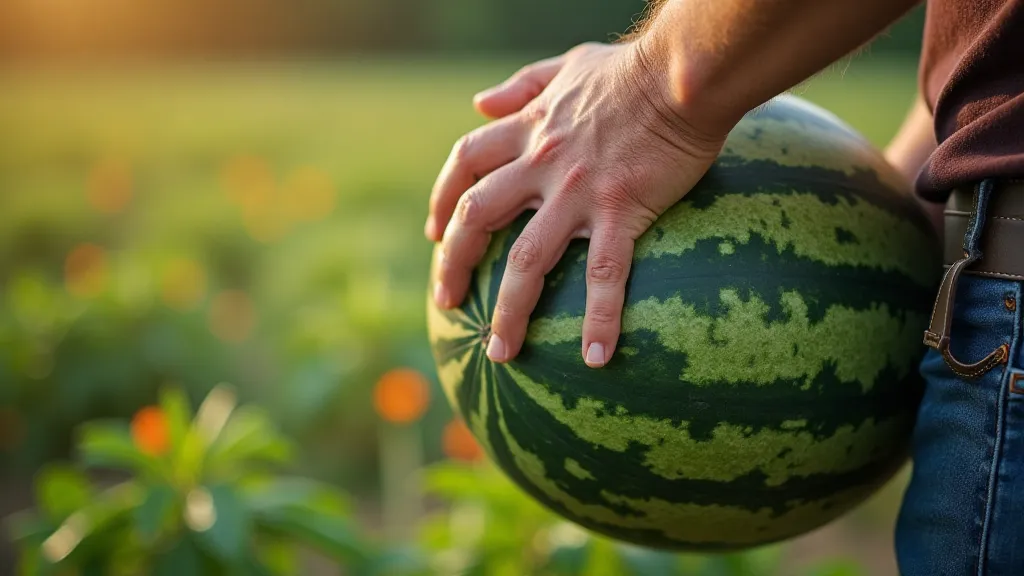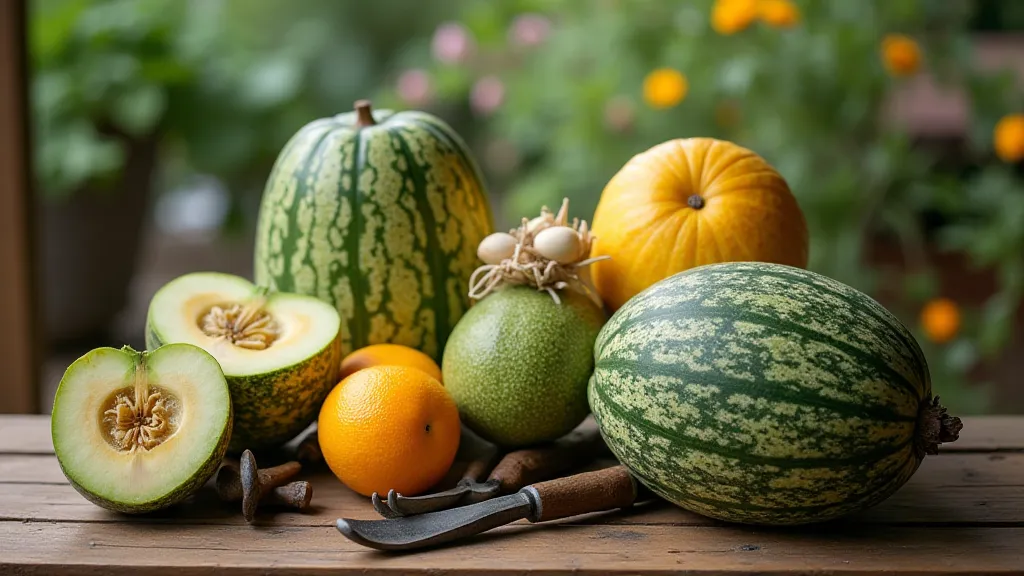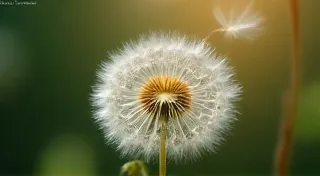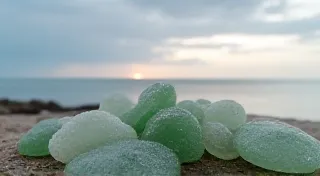The Weight of Promise: Harvesting Watermelons at Peak Ripeness
There's a peculiar resonance I find in old things, in objects that have held stories, endured the passage of time, and offer a glimpse into lives lived differently. It’s the same feeling I get when I hold a vintage accordion, its bellows sighing with the ghosts of dances and celebrations, the keys worn smooth by countless hands. There’s a depth there, a weight of promise, much like the anticipation that builds as I wait for a watermelon to reach its perfect ripeness.
Growing heirloom watermelons isn't just about cultivating a fruit; it's about connecting with a heritage. These aren’t the uniform, aggressively sweet orbs we often find in supermarkets. They are remnants of a time when flavors were dictated by the soil, the climate, and the patient hand of the grower. Think of ‘Black Diamond,’ a dark-rind beauty from Missouri, or ‘Arkansas Queen,’ celebrated for its vibrant pink flesh and subtle sweetness. Each variety tells a story, a legacy passed down through generations. Just as the craftsmanship of a finely made accordion speaks to a dedication to artistry and precision, the heirloom watermelon reveals the careful selection and preservation of quality.

The Echo of History: Watermelons Through Time
Watermelons aren’t new. Evidence suggests they were cultivated in Africa thousands of years ago. From there, they spread throughout the ancient world, eventually finding their way to Europe and, later, to the Americas with the explorers. Early American settlers treasured these large, thirst-quenching fruits, and families often grew their own. Unlike the industrial agricultural practices of today, the emphasis was on flavor and adaptability. Farmers selectively bred varieties suited to their local conditions, resulting in the incredible diversity of heirloom watermelons we can still enjoy today. Consider, too, the dedication involved; a fine accordion maker wouldn’t cut corners, and neither did the farmers painstakingly preserving these precious seeds.
My grandfather, a quiet man of the earth, grew ‘Georgia Jet’ every summer. It wasn't the flashiest watermelon, but it tasted of sunshine and hard work. He never talked much about it, but I remember the feeling of reverence he held for that single plant. It wasn't just food; it was a connection to his past, a living testament to the traditions that shaped his life. Restoring an old accordion can be a similarly painstaking process, requiring patience, skill, and a deep appreciation for the original design. You’re not just fixing an object; you’re resurrecting a story.
Mastering the Art of Ripeness: Beyond the Thump
So, how do you know when a watermelon is ready? Forget the old wives’ tale about the “thump.” While a dull, hollow sound can be a clue, it’s far from reliable. Judging watermelon ripeness is a complex art, a combination of observation and intuition – much like discerning the quality of an accordion’s tone based on the feel of the keys and the resonance of the body.
Let's break down the key indicators:
- The Ground Spot: This is the area where the watermelon rested on the ground. A ripe watermelon will have a creamy yellow or even orange ground spot. A white or pale green spot indicates it’s not ready.
- The Tendril: The tendril closest to the fruit should be brown and dried up. This is a critical sign – once the tendril dries, the watermelon no longer needs the plant’s support to ripen.
- The Rind: A dull, not shiny, rind suggests ripeness. A shiny rind often means it was harvested too early.
- The Weight: A ripe watermelon will feel surprisingly heavy for its size. This is due to the high water content.
- The Sound (Revisited): Okay, the thump isn't *useless*, but listen for a deep, muffled sound, rather than a high-pitched or ringing one.

The Gentle Patience of Observation
The process isn’t about rushing; it’s about patient observation. Just as a skilled accordion repairman takes his time examining every component of an instrument, a gardener must scrutinize each watermelon, looking for subtle clues that reveal its readiness. It's a dance of anticipation and restraint.
I’m reminded of a particularly challenging accordion restoration I undertook years ago. It was a beautiful instrument, but years of neglect had taken their toll. It required meticulous cleaning, careful repair of the bellows, and replacement of several broken keys. The process was slow, demanding, and occasionally frustrating, but the eventual reward—hearing that accordion sing again—made every moment worthwhile.
Beyond the Harvest: Sharing the Legacy
Harvesting a ripe heirloom watermelon is a moment of quiet triumph. It's a tangible result of careful planning, diligent tending, and a deep appreciation for the past. It’s a flavor unlike anything you’ve experienced in a supermarket, a taste of history and heritage. And it's something worth sharing.
Consider saving some seeds from your best watermelons. Just as antique accordion collectors safeguard these pieces of history, preserving heirloom varieties ensures their continued existence. Each seed holds the promise of future harvests, a continuation of a legacy passed down through generations. It's a way to honor the farmers who came before us, the artisans who crafted the tools we use, and the enduring power of connection – to the earth, to our history, and to the simple joy of a perfectly ripe watermelon.
The weight of that promise—the sweetness on your tongue, the satisfaction of a job well done, the link to generations past—is a feeling worth cultivating.






